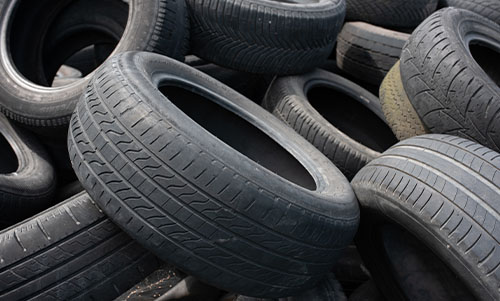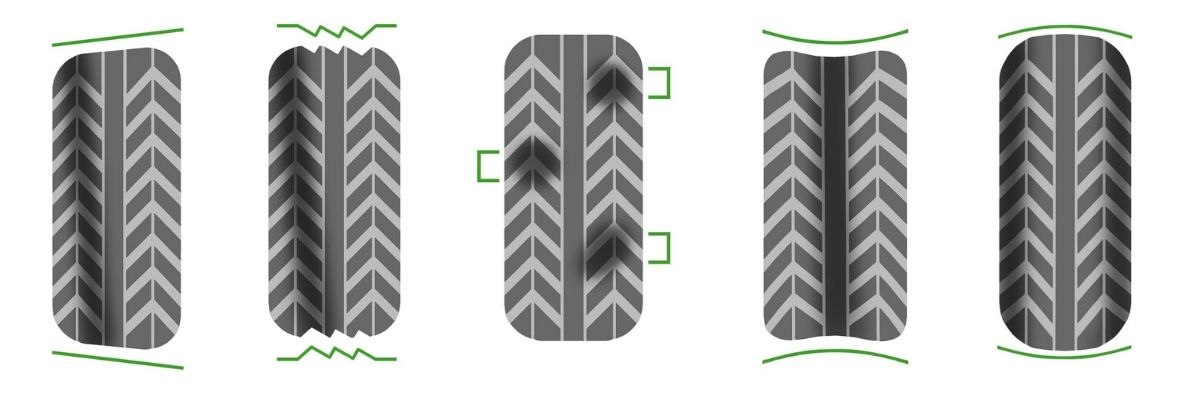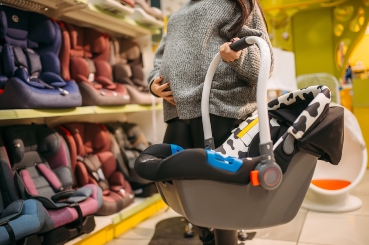What can cause excessive or uneven tyre wear?

As your only contact with the road surface, your car tyres are an incredibly important aspect of your car. The correct maintenance and care of your car tyres is essential to keep you safe and your car running efficiently.
Tyres wear over time, so it is normal to have to replace your tyres. However, if your tyres are wearing abnormally, it may indicate more serious problems and could put your safety at risk on the roads. In this article, we take a look at what can cause excessive or uneven tyre wear.
What causes uneven tyre wear?
Uneven tyre wear can be caused by a variety of issues. It could be something simple like under or overinflated tyres or could be a more serious issue such as suspension or alignment troubles or an internal tyre fault.
Tyre wear patterns
Different issues can result in different tyre wear patterns. However, this can be useful as it means you can get a good idea about the potential issue just by keeping an eye on your tyres and how they are wearing.
Common tyre wear patterns to look out include camber wear, tyre wear on the outside edge, cupping tyre wear and patchy tyre wear. To ensure you know what you’re looking for, we’ve taken a look at these common tyre wear patterns and what could be causing excessive or uneven tyre wear.

Camber Wear
Look out for: The inside edge or outside edge of the tyre will show considerably more wear than the rest of the tyre if your tyre is suffering from camber wear. You will usually see a gradual slope from one side of the tyre to the other, so it is easy to identify.
Possible causes: Camber wear can be caused by suspension misalignment, a bent strut, a dislocated strut tower, a weak or broken spring, a bent spindle or a collapsed or damaged control arm brushing.
What to do: The causes of tyre camber wear can be fairly serious and affect the safety and performance of your car. It is important to get your vehicle checked at an approved garage to determine the cause of the issue by checking the suspension and its alignment.
Feathered Directional Wear
Look out for: Feathered directional wear tyre pattern can be difficult to see, so you must feel the tyre when you are checking it. Feathered directional tyre wear feels smooth when you rub your hand over the tyre one way but feels rough when rubbed in the opposite direction.
Possible causes: Feathered directional wear pattern can be caused by toe misalignment, worn tie rod ends, worn idler arms, bent steering linkage or a bent steering arm.
What to do: It is important to get your car checked at an approved garage to determine the issue so that they can fix the underlying cause of the uneven wear.
Cupping Tyre Wear
Look out for: With cupping tyre wear you need to look out for cups or dips around the edge of the tyre tread. Cupping wear doesn’t follow a specific pattern, so you must check the entire tyre for signs of cups or dips.
Possible causes: Cupping tyre wear is often caused if one of the tyres is out of balance with the others, however, it could also be due to weakened struts or shock absorbers.
What to do: Cupping can indicate a problem which could be fairly serious if left untreated, which is why you should take your car to an approved garage to get the tyres checked. A technician will be able to advise whether your tyres need re-balancing, or if you have weakened struts or shock absorbers, in which case these may need replacing.
Centre Tread Wear
Look out for: Excessive wear down the centre of the tyre with less wear visible on the tyres outer edges.
Possible causes: Centre tyre wear is usually caused by overinflating the tyres. This causes a bulge in the centre of the tyre, this causes the centre to take more pressure and thus wear more quickly than the outer tyre edges.
What to do: Make sure you check your tyre pressures regularly and if you do have to inflate your tyres stick within your manufacturers recommended tyre pressure guidelines which can be found in your manual.
Outside Tyre Wear
Look out for: With outside edge tyre wear, the outer edge of the tyre will wear more quickly than the centre of the tyre.
Possible causes: Outside tyre wear is usually caused by underinflated tyres which causes a dip to occur in the centre of the tyre. This dip has less contact with the road so does not wear as quickly while putting more of the weight of the car on the outer edge of the tyre causing more wear.
What to do: You should make sure you check your tyre pressures regularly and always pump the tyre up to the manufacturers recommended tyre pressure. If you are not confident checking your own tyre pressures, you can always pop into your local Stoneacre branch for a free check.
You may also find your tyres susceptible to patchy wear, i.e., just random wear of the tyre that has no clear pattern. This can indicate a tyre is out of balance, so you should head to the garage to get your tyres balanced.
Tips for checking for abnormal tyre wear
It is a good idea to inspect your tyres checking the tyre depth, pressure and general condition at least once per month as well as before setting off on a long journey. You can take a look at our tips on how to check your tyres for abnormal tyre wear.
Checking Tyre Depth
A good way to check your tyre depth is to use the 20p test. Place a 20p into the main tread grooves of your tyre. If the outer band of the 20p coin is obscured when inserted, then your tyre has a tread depth above the legal limit. If the outer band is still visible, then the tread depth may be illegal and should be checked. You should test at least three different locations on the tyre to make sure the tyre is wearing evenly.
Checking Tyre Pressure
You should check the pressure of every tyre, including your spare wheel using a pressure gauge. If you don’t have a pressure gauge most fuel stations have one available for a nominal fee. You can find the recommended tyre pressure in your car handbook and you should always stick within the recommended limit.
Checking General Condition
You should also make sure you check the condition of the entire tyre by both looking and feeling its condition. You should check the tyre initially before driving forward slightly to enable you to check the rest of the tyre.
You can find out more about keeping your tyres in tip-top condition over on our tyre maintenance blog or check out our comprehensive post on tyre blowouts, which will help you stay in control should things go wrong.
Blog Comments
To view, comment or reply to comments you must be logged into facebook



